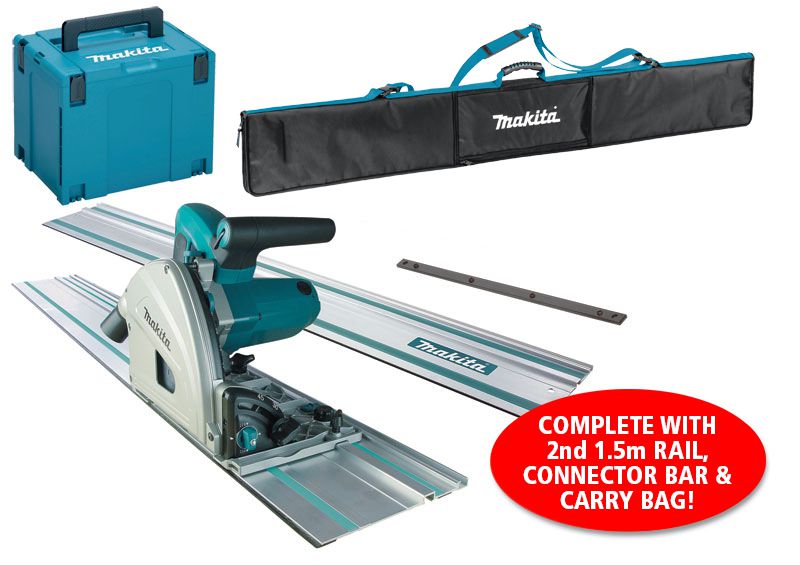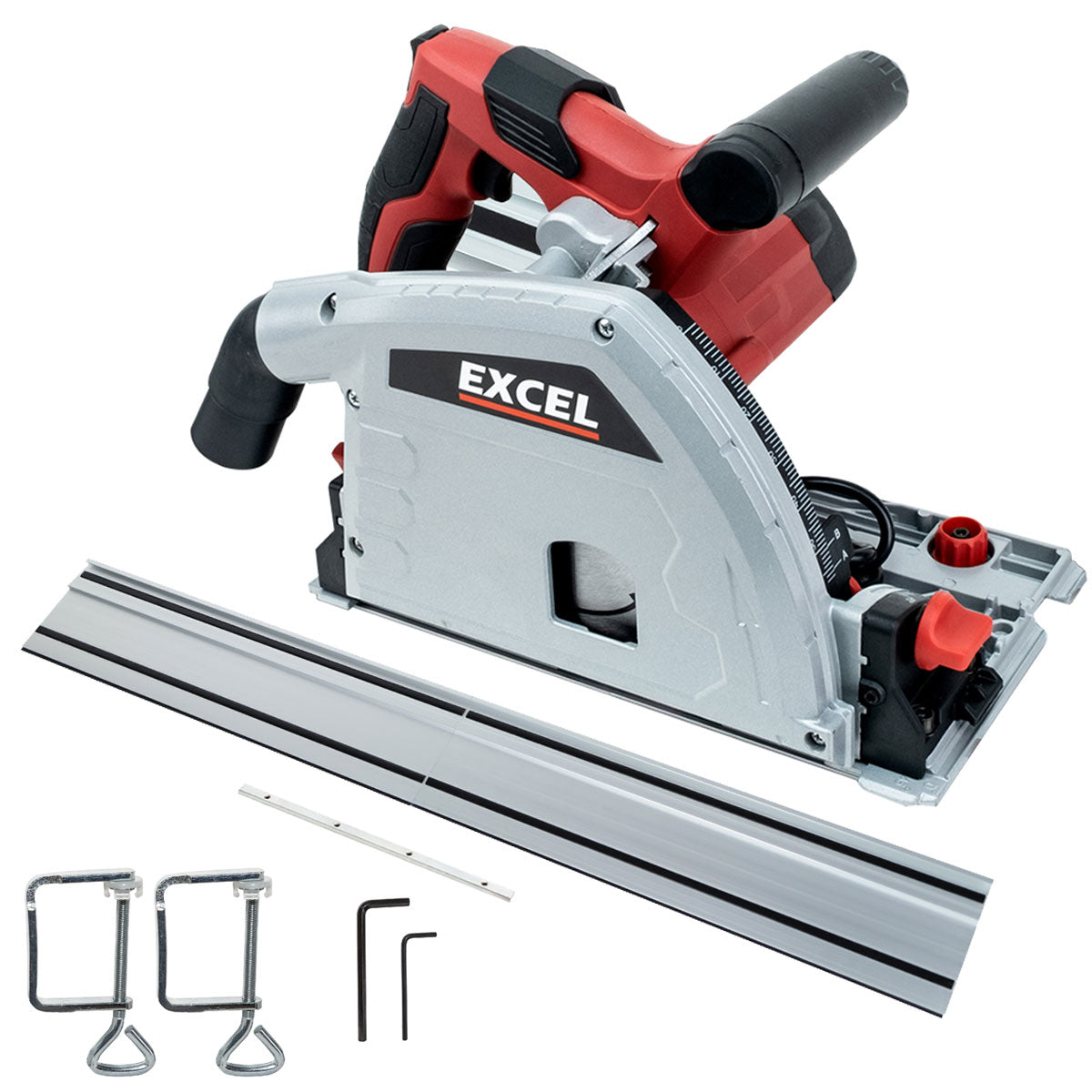Hi... I think I want to buy a cheap track saw. I am struggling to make a decision... I'm hoping to solicit some advice here...
I'm only an occasional DIY-er - ready to give most things a go - under no illusion that I've any natural skill. I've bought some tools; I've inherited more tools - though they weren't the best quality.
I've already got:
* Einhell sliding compound Mitre Saw - It's great - I got mine for £150.
* ~20 year old cheap when new chop saw. Nothing wrong with it - but I don't need it now I've got the Einhell.
* ~20 year old (very cheap when new) Titan 10" Table saw. Poor condition. I am keeping it - but it is difficult to cut accurately with it. OK for garden projects etc.
* ~20+ year old circular saw. It was dropped a decade ago - twisting the base. I've used it pushed against a straight edge to cut ply/stand-board. It's basically scrap - it smells of burning and won't hold the depth/angle at which it is set. I used it to cut rubbish to burn - but it's not up to much else.
I only very occasionally cut sheet materials. Maybe one job every other year. I've two jobs I want to do involving sheet material in the near future. I want to trim a kitchen counter-top... and I want to cut replacement chipboard flooring to replace damaged pieces. My existing saws aren't suited to either task.
My hunch is that the right tool for the job is a track saw. I've always found it difficult to make accurate cuts using a circular saw... and, I'm guessing, this would be much easier with a track to avoid my cut wandering off course. I don't want to waste money - but I'm also aware that my requirements are very basic... and that good track saws seem very expensive. I feel I need to replace my circular saw... and I'm wondering if a cheap Track saw would be the right purchase.
I looked at the McAlister track saw in B&Q - but I wasn't very impressed... the build quality seemed cheaper than the price and it's only 1200W.
Online I've found:
Evolution R185CCSX - 1600W - 1.02m track (bit short?) - £113
GMC 336282 1400W - 1400W - 1.40m track - £102.74
Is it silly to be considering one of these cheap saws? Would I be better with a standard circular saw and my old trick of trying to use a straightedge against the edge of the base of the circular saw? Does anyone own either of the cheap track saws above? If so - would you recommend the one you've got?
I'm only an occasional DIY-er - ready to give most things a go - under no illusion that I've any natural skill. I've bought some tools; I've inherited more tools - though they weren't the best quality.
I've already got:
* Einhell sliding compound Mitre Saw - It's great - I got mine for £150.
* ~20 year old cheap when new chop saw. Nothing wrong with it - but I don't need it now I've got the Einhell.
* ~20 year old (very cheap when new) Titan 10" Table saw. Poor condition. I am keeping it - but it is difficult to cut accurately with it. OK for garden projects etc.
* ~20+ year old circular saw. It was dropped a decade ago - twisting the base. I've used it pushed against a straight edge to cut ply/stand-board. It's basically scrap - it smells of burning and won't hold the depth/angle at which it is set. I used it to cut rubbish to burn - but it's not up to much else.
I only very occasionally cut sheet materials. Maybe one job every other year. I've two jobs I want to do involving sheet material in the near future. I want to trim a kitchen counter-top... and I want to cut replacement chipboard flooring to replace damaged pieces. My existing saws aren't suited to either task.
My hunch is that the right tool for the job is a track saw. I've always found it difficult to make accurate cuts using a circular saw... and, I'm guessing, this would be much easier with a track to avoid my cut wandering off course. I don't want to waste money - but I'm also aware that my requirements are very basic... and that good track saws seem very expensive. I feel I need to replace my circular saw... and I'm wondering if a cheap Track saw would be the right purchase.
I looked at the McAlister track saw in B&Q - but I wasn't very impressed... the build quality seemed cheaper than the price and it's only 1200W.
Online I've found:
Evolution R185CCSX - 1600W - 1.02m track (bit short?) - £113
GMC 336282 1400W - 1400W - 1.40m track - £102.74
Is it silly to be considering one of these cheap saws? Would I be better with a standard circular saw and my old trick of trying to use a straightedge against the edge of the base of the circular saw? Does anyone own either of the cheap track saws above? If so - would you recommend the one you've got?




